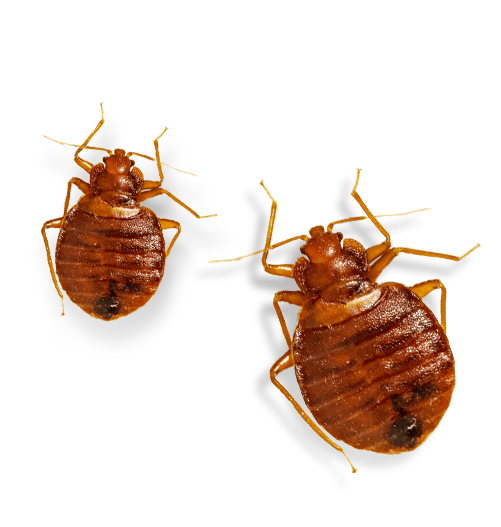Exploring the Scientific Research Behind Bed Bug Warmth Treatments as a Sustainable Parasite Administration Technique
In the realm of bug management, the pursuit for effective and lasting options stays a consistent search. One such method that has actually obtained traction over the last few years is using warmth treatments to battle bed insect problems. By utilizing the scientific research behind thermal death points for these relentless bugs, heat therapies supply an appealing choice to traditional chemical-based methods. The details of how warm properly eliminates bed insects and the wider effects for lasting pest management practices make this a topic worth exploring additionally.
Bed Insect Warm Therapy Process

Thermal Fatality Factor for Bed Insects
Subjecting bed bugs to elevated temperature levels beyond their thermal resistance variety is critical for accomplishing efficient obliteration in warm therapy processes. The thermal fatality point for bed bugs refers to the temperature level at which these insects can not endure. Research shows that bed bugs start to die when subjected to temperatures above 113 ° F(45 ° C) for a continual period. As the temperature raises, so does the mortality rate of bed pests. At around 118 ° F(48 ° C ), bed insects start to pass away rapidly, with a death price of nearly 99% within minutes of direct exposure. This demonstrates the level of sensitivity of bed bugs to high temperatures and highlights the performance of heat treatments in removing problems. By getting to and keeping temperatures above the thermal death point for bed pests, parasite management professionals can guarantee detailed removal of bed pest populaces, including hard-to-reach areas where chemical treatments may be much less effective. Understanding the thermal death point for bed insects is necessary for applying successful warmth therapy techniques and accomplishing sustainable parasite monitoring outcomes.
Advantages of Heat Treatments
Having established the critical thermal fatality point for bed bugs, it is important to now discover the considerable benefits that heat therapies use in efficiently eradicating these resistant bugs. Heat treatments existing a number of key advantages when compared to typical chemical techniques. Among the primary benefits is that warm can penetrate deep right into crevices and fractures where bed bugs hide, making sure that even the most hard-to-reach locations are heated up to dangerous temperatures. This detailed approach not just kills real-time bugs yet also targets bed insect eggs, preventing future invasions.
In addition, warmth treatments are non-toxic and eco-friendly, making them a lasting parasite management technique. Unlike chemical pesticides, warm treatments do not leave dangerous deposits that can present threats to human health or the environment. This aspect is particularly important in sensitive environments such as medical facilities, institutions, and suburbs where chemical use may not be desirable.
Additionally, heat treatments have a high success price in removing bed pest problems in a solitary treatment, decreasing the need for multiple gos to and reducing disruption to occupants. This performance not just conserves time and money but also gives comfort to those taking care of bed insect problems.
Effectiveness of Warmth Therapy

Research researches have consistently shown the effectiveness of warm treatments in accomplishing a high rate of bed insect death. Appropriately carried out warm therapies can reach all the holes and cracks where bed pests may be harboring, ensuring an extensive strategy to extermination. In addition, heat therapies have actually the added benefit of eliminating bed bug eggs, which are commonly resistant to conventional chemical therapies. In general, the efficiency of warmth treatments in eliminating bed insect problems makes them a dependable and sustainable insect administration approach.
Lasting Parasite Monitoring Conveniences
Implementing sustainable insect management techniques offers long-lasting benefits for both the atmosphere and public health and wellness. By utilizing approaches such as warmth treatments for insect control, we can reduce the dependence on dangerous chemical pesticides that can have negative effects on communities and human health - exterminator. Lasting insect management approaches assist in preserving biodiversity by targeting certain bugs without harming non-target microorganisms, consequently maintaining a well balanced community
Furthermore, lasting pest administration practices add to the overall wellness and well-being of the general public. By minimizing direct exposure to toxic chemicals utilized in traditional bug control methods, warm treatments supply a safer option for parasite administration in household, commercial, and public areas. This decrease in chemical usage likewise aids in avoiding chemical deposits from contaminating dirt, water, and air, safeguarding environmental high quality.
Verdict
Finally, bed insect warmth treatments have been shown to be a sustainable and effective insect monitoring approach. The thermal death point for bed insects makes them prone to warmth therapies, which have numerous advantages over conventional chemical treatments. The efficiency of warmth therapies in removing bed pest infestations while minimizing environmental effect highlights the capacity of this technique as a lasting option for bug control.
The bed pest warmth therapy procedure entails elevating the temperature level within ravaged locations to a degree that properly removes bed pests and their eggs. By getting to and preserving temperature levels above the thermal death point for bed bugs, pest management professionals can ensure detailed elimination of bed insect populations, including hard-to-reach locations where see it here chemical therapies might be less effective. One of the primary benefits is that warmth can permeate deep into holes and splits where bed insects hide, guaranteeing that even the most hard-to-reach locations are heated up to deadly temperatures. Unlike chemical therapies that might leave behind immune populations, heat therapies provide a non-toxic and environmentally friendly service that can penetrate deep right into furnishings, walls, and various other hard-to-reach locations where bed bugs conceal.
The thermal fatality point for bed pests makes them prone to heat therapies, websites which have many advantages over typical chemical therapies.